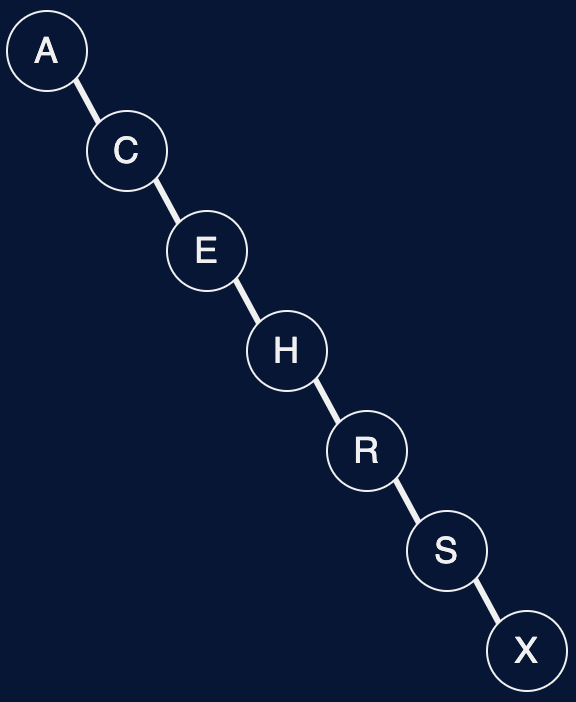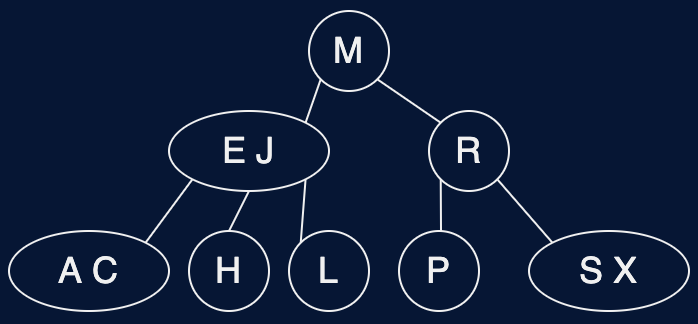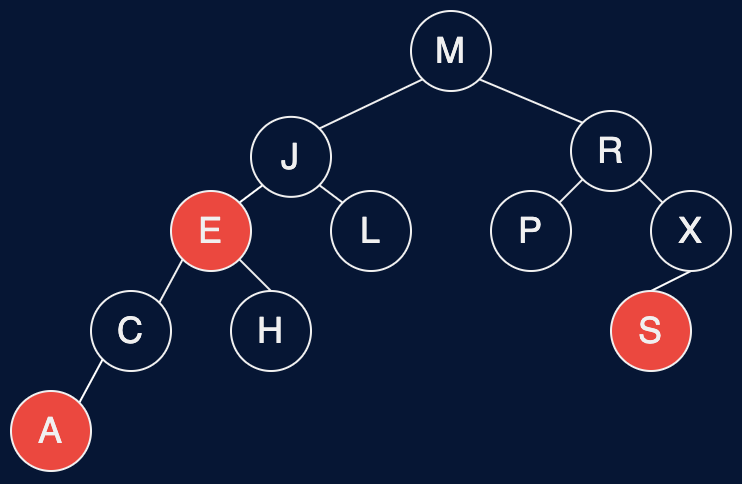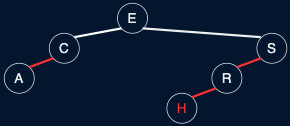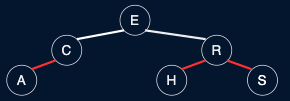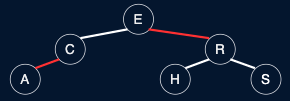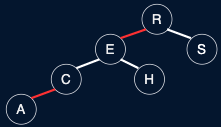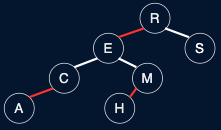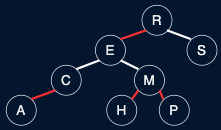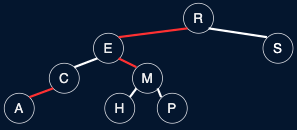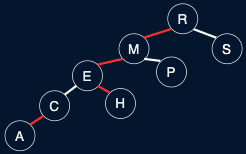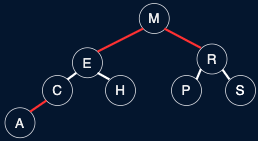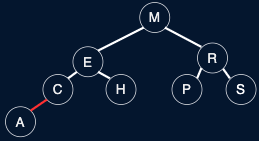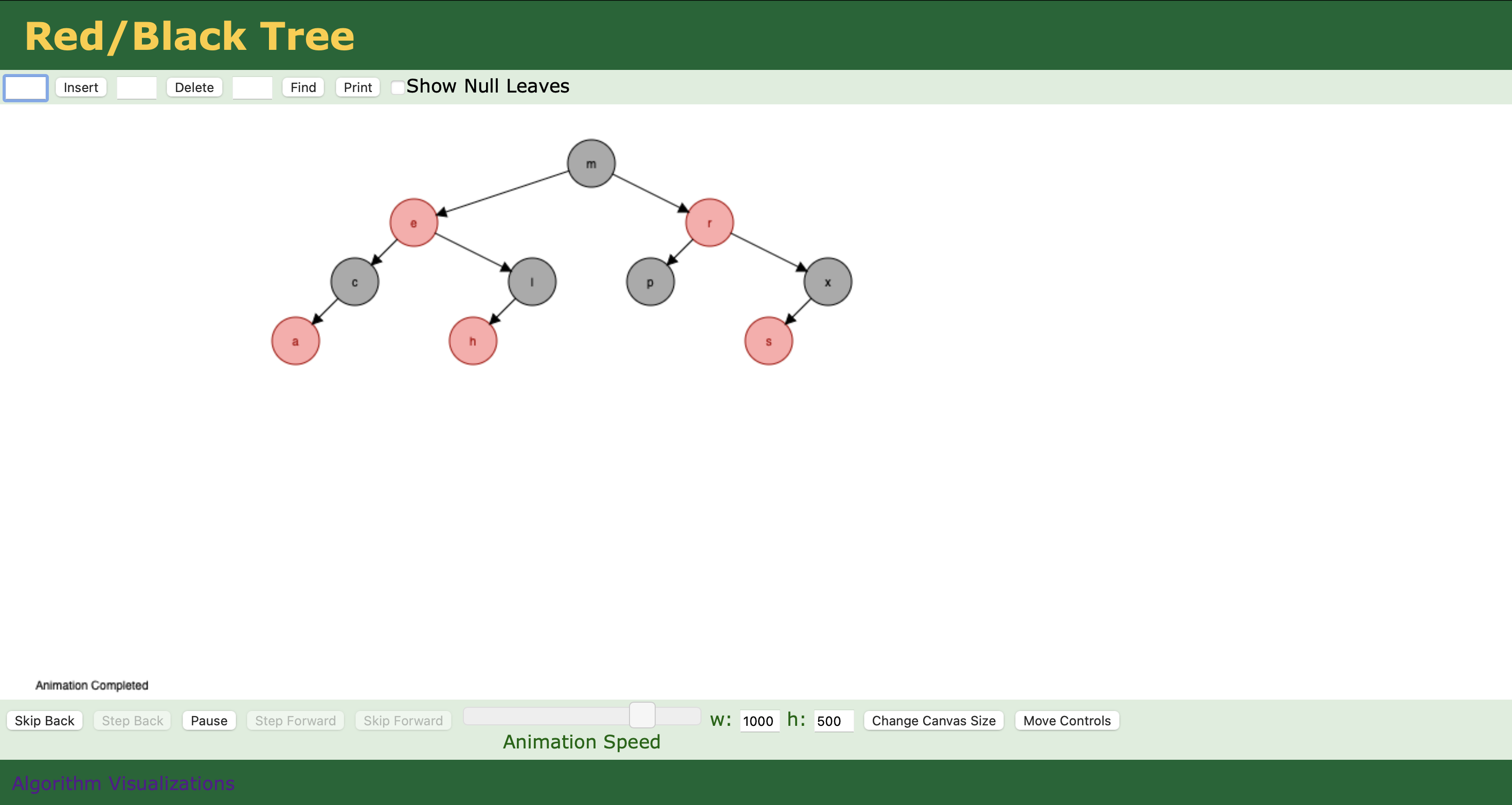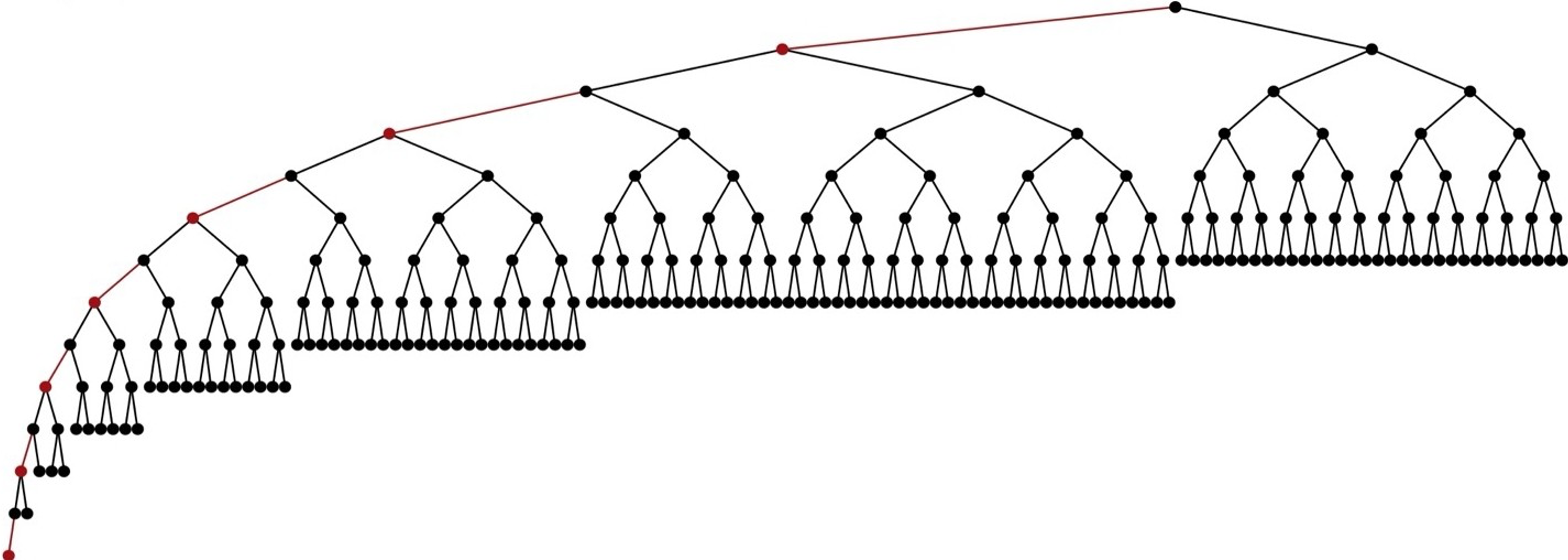Left-Leaning Red-Black Trees#
Left-leaning red-black BSTs#
Structure
A left-leaning red-black tree is a type of self-balancing binary search tree that maintains the following properties:
Every node is colored either red or black.
The root node is always black.
Every leaf (null node) is considered black.
If a node is red, both its children are black.
Every path from a node to its descendant leaves contains the same number of black nodes.
Why Red-Black Trees?#
Most of the self-balancing BST library functions like map, multiset, and multimap in C++ use Red-Black Trees.
Implementing CPU Scheduling Linux.
K-mean clustering algorithm in machine learning for reducing time complexity.
MySQL also uses the Red-Black tree for indexes on tables in order to reduce the searching and insertion time.
Implementation of the virtual memory manager in some operating systems, to keep track of memory pages and their usage.
Many programming languages (such as Java, C++, and Python) have implemented Red Black Trees as a built-in data structure for efficient searching and sorting of data.
Implementation of graph algorithms such as Dijkstra’s shortest path algorithm and Prim’s minimum spanning tree algorithm.
Implementation of game engines.
– Geeks For Geeks
Guaranteed time complexity of O(log n) for basic operations like insertion, deletion, and searching.
Self-balancing.
Used in a wide range of applications due to their efficient performance and versatility.
The mechanism used to maintain balance in Red Black Trees is relatively simple and easy to understand.
– Geeks For Geeks
Red Black Trees require one extra bit of storage for each node to store the color of the node (red or black).
Complexity of Implementation.
Although Red Black Trees provide efficient performance for basic operations, they may not be the best choice for certain types of data or specific use cases.
– Geeks For Geeks
Implementing 2-3 trees with binary trees#
How to represent a 3-node?
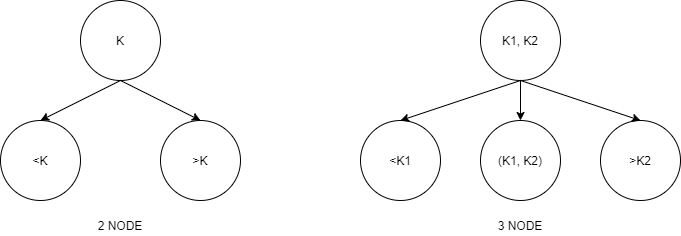
Regular BST
No way to tell a 3-node from a 2-node
Can’t (uniquely) map from BST back to 2-3 tree
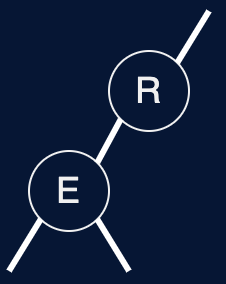
Regular BST with red “glue” nodes
Wastes space for extra node
Messy code
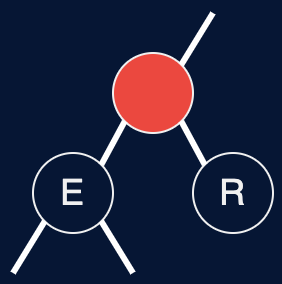
Regular BST with red “glue” links
Widely used in practice
Arbitrary restriction: red links lean left
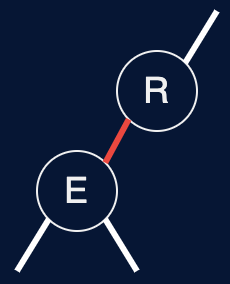

Fig. 39 LLRB Tree v. 2-3 Tree#
Definition of LLRB trees (without reference to 2-3)#
No node has two red links connected to it
Red links lean left
Every path from root to null has the same number of black links
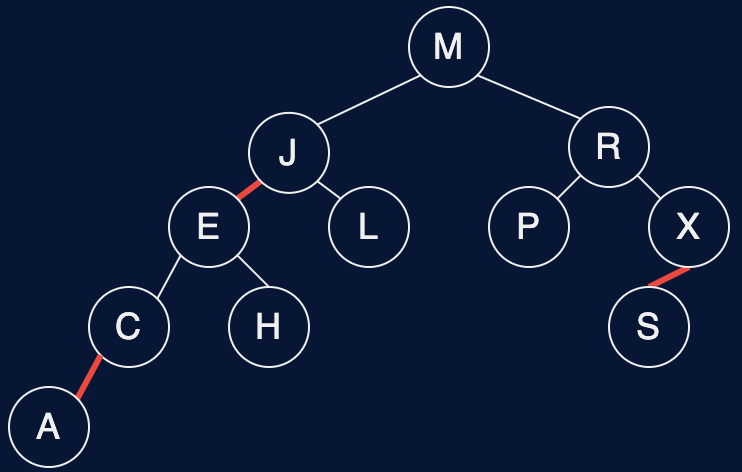
Fig. 40 \(red-black\ tree\)#
Search#
Observation#
Search is the same as for BST (ignore color)
public Value get(Key key) {
Node x = root;
while (x != null) {
int cmp = key.compareTo(x.key);
if (cmp < 0) x = x.left;
else if (cmp > 0) x = x.right;
else if (cmp == 0) return x.val;
}
return null;
}

Fig. 41 \(red-black\ tree\)#
Remark: Many other ops (floor, iteration, rank, selection) are also identical
Representation#
Each node is pointed to by precisely one link (from its parent) \(\Rightarrow\) can encode color of links in nodes
private static final boolean RED = true;
private static final boolean BLACK = false;
private class Node {
Key key;
Value val;
Node left;
Node right;
// color of parent link
Boolean color;
}
private boolean isRed(Node x) {
// null links are black
if (x == null) return false;
return x.color == red;
}
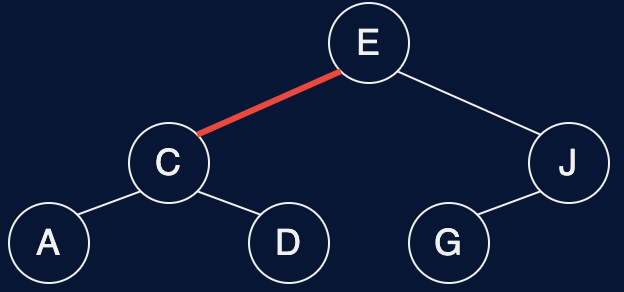
The road to LLRB trees#
Red-Black Tree Operations#
Maintain 1-1 correspondence with 2-3 trees
Symmetric order.
Perfect black balance.
[ but not necessarily color invariants ]
To restore color invariants: perform rotations and color flips
Orient a (temporarily) right-leaning red link to lean left
private Node rotateLeft(Node h) {
assert isRed(h.right);
Node x = h.right;
h.right = x.left;
x.left = h
x.color = h.color;
h.color = RED;
return x;
}
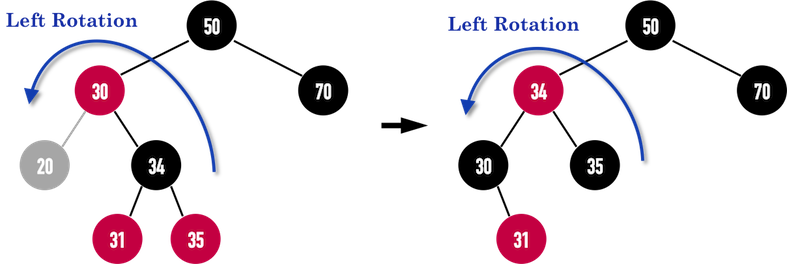
Fig. 47 before & after…#
Invariants: Maintains symmetric order and perfect balance
Orient a left-leaning red link to (temporarily) lean right
private Node rotateRight(Node h) {
assert isRed(h.right);
Node x = h.left;
h.left = x.right;
x.right = h
x.color = h.color;
h.color = RED;
return x;
}
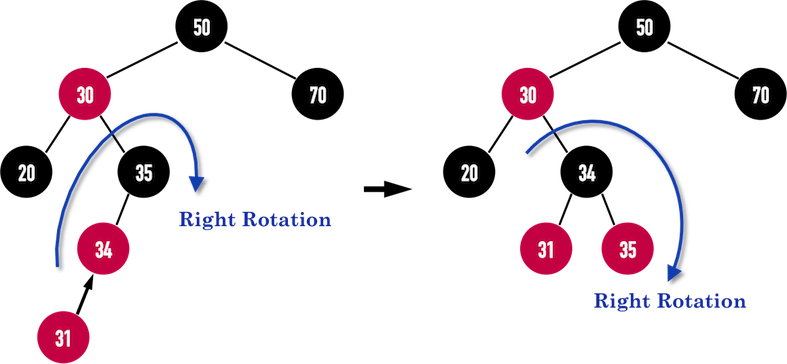
Fig. 48 before & after…#
Invariants: Maintains symmetric order and perfect balance
Recolor to split a (temporary) 4-node
private Node colorFlip(Node h) {
assert isRed(h);
assert isRed(h.left);
assert isRed(h.right);
h.color = RED;
h.left.color = BLACK;
h.right.color = BLACK;
}

Fig. 49 before & after…#
Invariants: Maintains symmetric order and perfect balance
Insertions#
Do standard BST insert \(\ \ \ \ \ \ \ \ \ \ \ \ \leftarrow\) preserves symmetric order
Color new link red \(\ \ \ \ \ \ \ \ \ \ \ \ \ \ \ \ \ \ \ \ \leftarrow\) preserve perfect black balance
two left red links in a row? \(\ \ \ \ \ \ \ \ \ \ \ \ \ \ \ \ \ \ \ \ \ \ \Rightarrow\) rotate right
left and right links both red? \(\ \ \ \ \ \ \ \ \ \ \ \ \ \ \ \ \ \ \ \Rightarrow\) color flip
right link only red? \(\ \ \ \ \ \ \ \ \ \ \ \ \ \ \ \ \ \ \ \ \ \ \ \ \ \ \ \ \ \ \ \ \ \ \Rightarrow\) rotate left
Visualize#
Implementation#
Do standard BST insert and color new link red
two left red links in a row? \(\ \ \ \ \ \ \ \ \ \ \ \ \ \ \ \ \ \ \ \ \ \ \Rightarrow\) rotate right
left and right links both red? \(\ \ \ \ \ \ \ \ \ \ \ \ \ \ \ \ \ \ \ \Rightarrow\) color flip
right link only red? \(\ \ \ \ \ \ \ \ \ \ \ \ \ \ \ \ \ \ \ \ \ \ \ \ \ \ \ \ \ \ \ \ \ \ \Rightarrow\) rotate left
private Node put(Node h, Key, k, Value v) {
if (h == null) return new Node(key, val, RED; // insert at bottom and color red
int cmp = key.compareTo(h.key)
if (cmp < 0) h.left = put(h.left, key, val);
else if (cmp > 0) h.left = put(h.right, key, val);
else if (cmp == 0) h.val = val);
// following lines restore color invariants
if (isRed(h.right) && !isRed(h.left)) h = rotateLeft(h);
if (isRed(h.left ) && !isRed(h.left.left)) h = rotateRight(h);
// only a few extra lines of code provides near-perfect balance
if (isRed(h.left ) && isRed(h.right)) h = flipColors(h);
return h;
}
Visualizations | \(n=255\)#
Balance#
Height of corresponding 2-3 tree is \(\le log_2\ n\)
Black height = height of corresponding 2-3 tree \(\le log_2\ n\)
Never two red links in a row
\(\ \ \ \ \ \Rightarrow\) height of LLRB tree \(\le (2 \times black\ height) + 1 \le 2\ log_2\ n\)[A slightly more refined argument show \(height\ \le 2\ log_\ n\)]
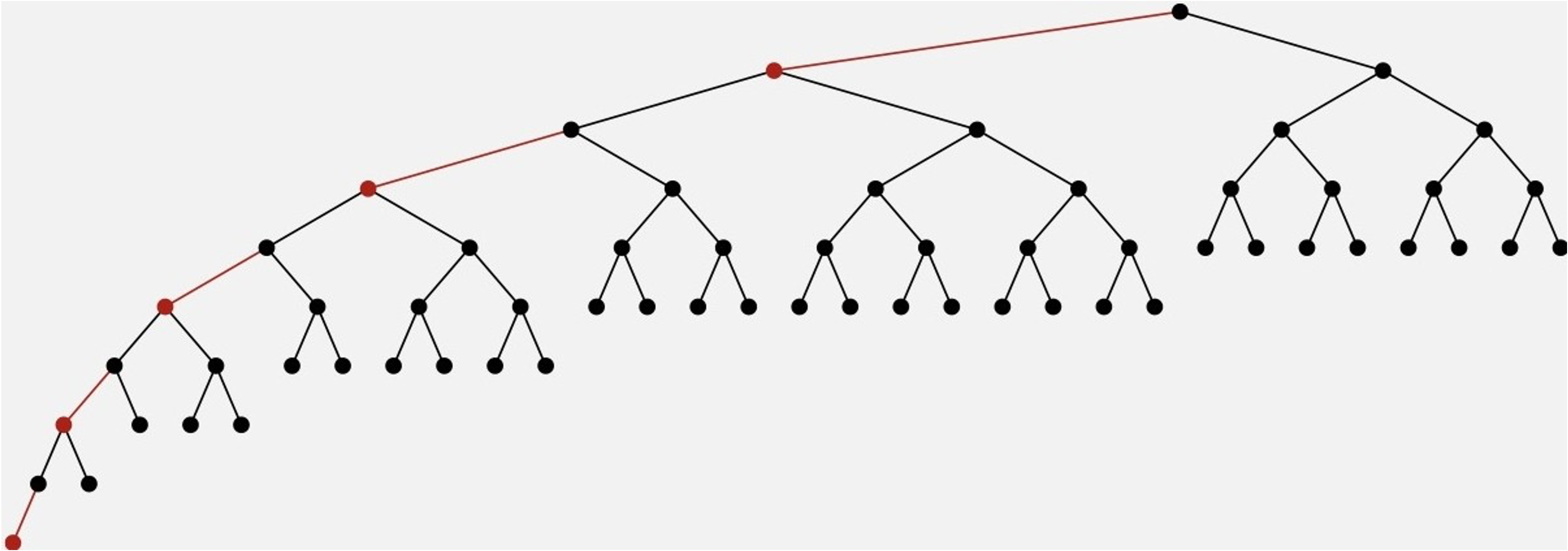
Fig. 64 \(height\ \le 2\ log_2\ n\)#
Summary#
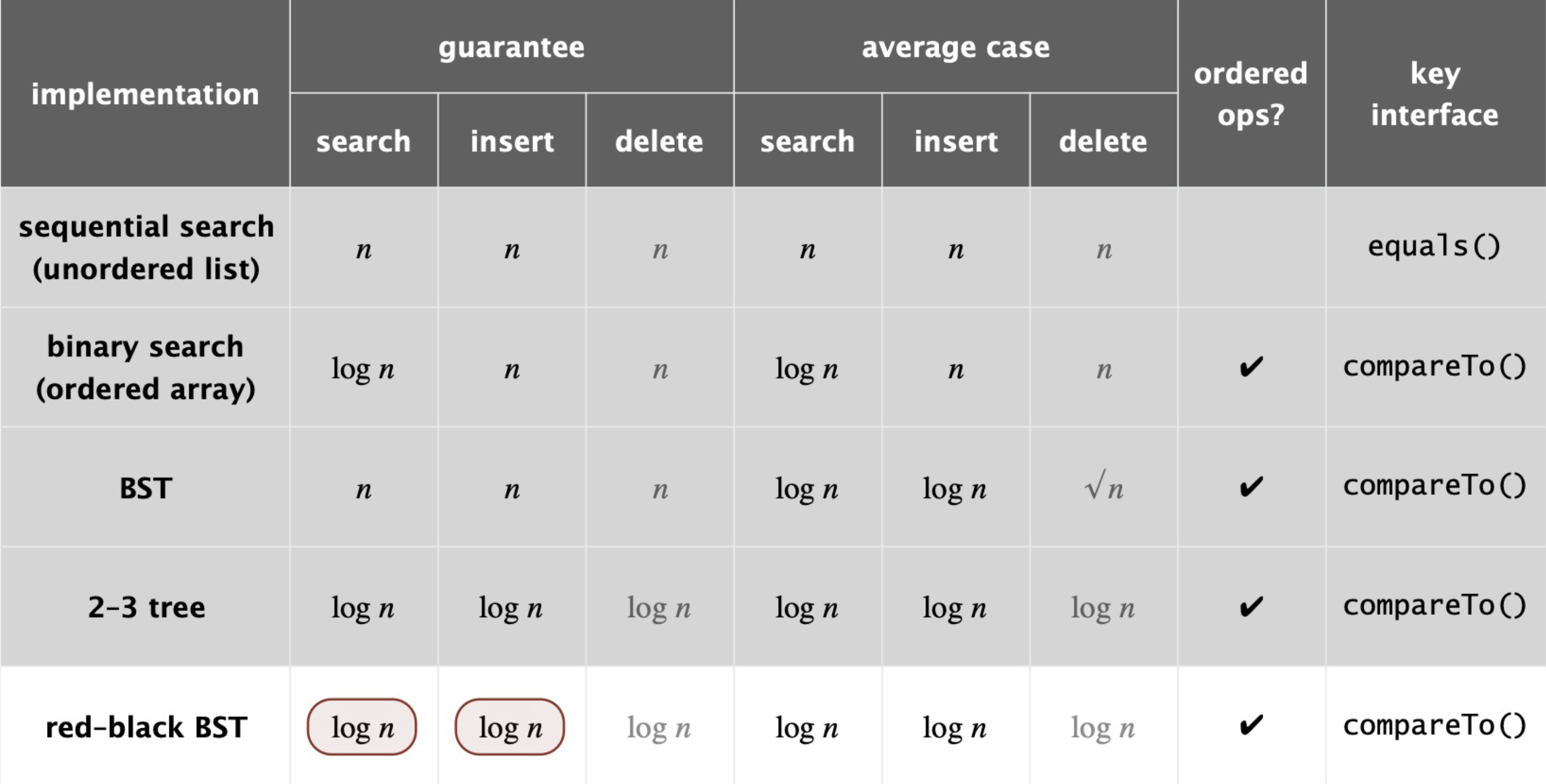
Fig. 65 hidden constant \(c\) is small for r-b BST
(at most \(2\ log_2\ n\) compares)#

